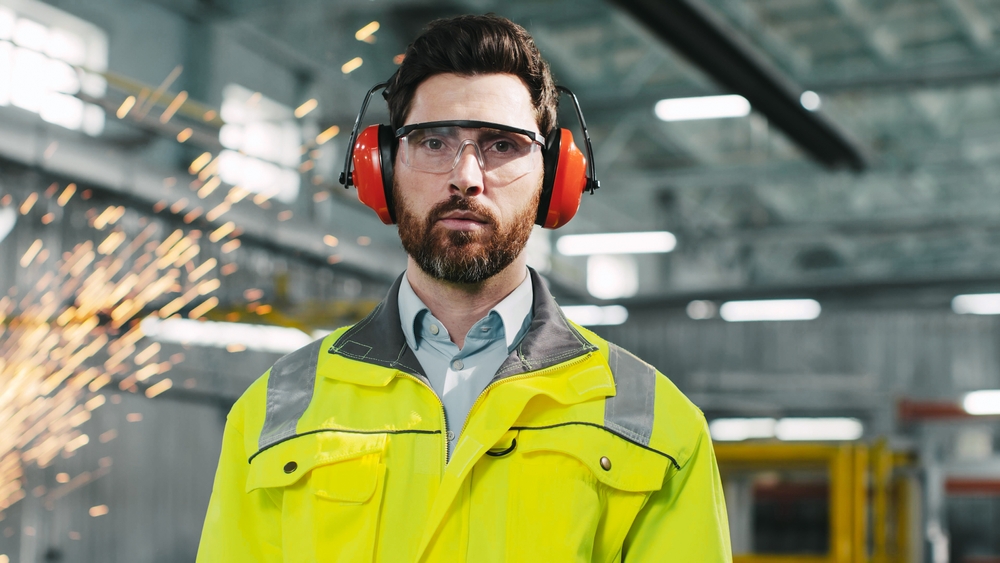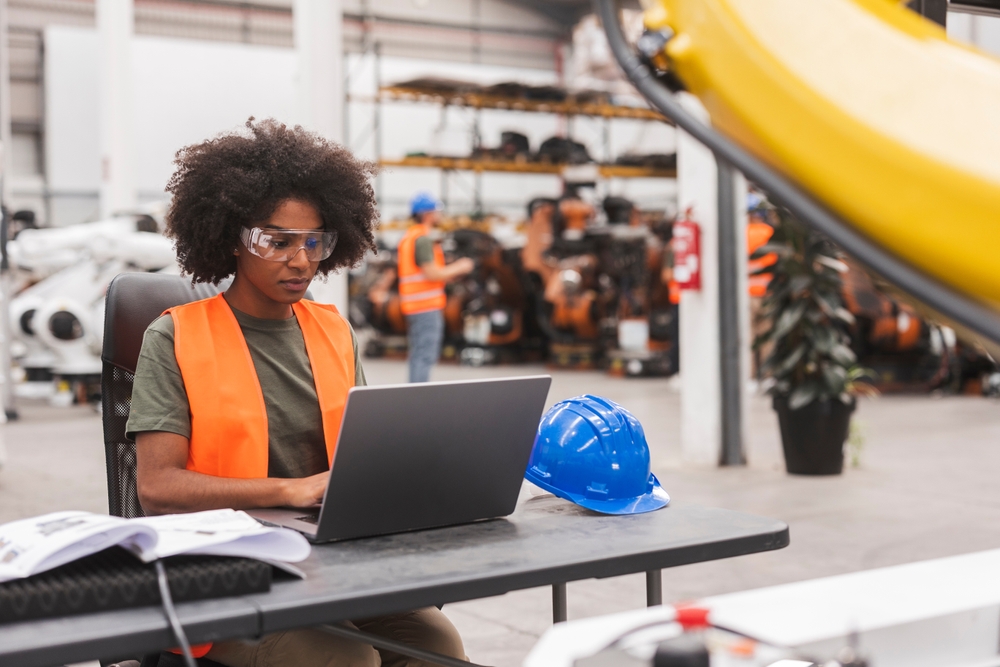
Blog
General Safety Glasses for Optimal Workplace Protection
In numerous industries, eye protection is a vital component of Personal Protective Equipment (PPE). It is important to take occupational safety seriously, particularly when operating in locations where there may be hazards to the safety of your employees. Wearing general safety glasses and safety goggles is the greatest approach to safeguarding your eyes.
In the United States, numerous eye injuries are recorded each day. The cause of more than 90 percent of these traumas is insufficient eyewear. Safety goggles and glasses are a must on the job since they can shield your eyes from potentially dangerous damage. Safety glasses are designed with soft lenses and eyecups that relieve pressure on the eyes.
When utilizing power tools or engaging in industrial tasks, they can also aid in preventing injuries including scratches and corneal abrasions. Wearing safety eyewear when operating a machine tool or performing other industrial tasks helps reduce the risk of injury at work. ANSI criteria are met through testing of safety eyewear. One kind of Personal Protective Equipment (PPE) that employees use to protect their eyes is safety glasses.
Safety glasses shield the eyes from unexpected objects that can irritate or hurt them. OSHA has regulations that are unique to eye protection in the workplace. For instance, OSHA standards require safety glasses to feature side shields to guard against ultraviolet radiation and other potential risks. Employees frequently wear safety glasses in the manufacturing, construction, and healthcare industries.
There are non-prescription and prescription versions of safety glasses available. Since non-prescription safety glasses have the widest field of vision, they are often advised. On the other hand, people who use prescription eyeglasses can also get rx safety glasses. Prescription safety glasses are available in a variety of styles and are usually rated for impact protection.
Your most precious asset is your eyes. Make sure you shield them from harm of any kind. How do you be sure that your eyes are safe? To find out more about safety eyewear, keep reading.
Essential Role of General Safety Glasses
We are exposed to numerous threats to our eyes every day, including UV rays, pesticides, and flying debris. The purpose of general safety glasses is to protect your eyes against these threats, avoiding damage and preserving the best possible condition of your eyes. In light of this, the following are possible justifications for wearing safety glasses:
- DVX Sunglasses with UV protection shield your eyes from both direct and reflected sunshine. On bright days, this facilitates clear vision for workers.
- Eye protection prevents dust, pollen, and other particles from entering the eyes.
- Safety glasses shield the eyes from chemicals and pesticide splashes.
- Safety glasses shield the eyes from tools, branches, leaves, and machinery.
- Safety glasses can also help avoid eye disorders (i.e., Eye growths).
- Non-UV and UV glasses can reduce redness and pain at the end of a lengthy day because of eye fatigue and eye exposure.
- Safety eyewear can enhance your appearance!
Styles of Safety Glasses
Safety glasses come in a wide variety of styles to suit a variety of demands. The main categories are as follows:
Safety Glasses For Everyday Use
Versatile and appropriate for a broad range of applications are all-purpose or general safety glasses. For everyday eye protection, they are an essential option.
Protective Goggles
To improve protection from dust, debris, and chemical splashes, safety goggles create a sealed shield around the eyes. For work in labs and settings where there are airborne particles, these are perfect.
Wraparound Safety Glasses
Protective eyewear that encircles the eyes with extra coverage is known as wraparound safety glasses. When building or engaging in outdoor activities, they are a preferred choice.
Frame Styles For Safety And Comfort
Full-Rim Frame
Because they completely encircle the lenses, full-rimmed safety glasses provide the highest level of protection. They work well in hazardous situations where particles or debris can appear from any angle.
Frame With a Semi-Rimless Design
The protection and style of semi-rimless safety glasses are well-balanced. Their partially framed top makes an expanded field of vision possible.
Rimless Frames and Goggles
For activities that call for unhindered vision, goggles, and glasses with no frames are perfect. For circumstances where splashes and flying debris are a worry, goggles offer total coverage and are ideal.
What Do ANSI Z87+ and Lens Marks Represent In Terms of Safety Eyewear?
Ninety percent of the 300,000 industrial eye injuries that occur in the US each year could have been avoided if employees had been carrying eye protection. Because there can be risks associated with eye hazards at work, it is crucial to wear the right Z87 safety glasses to reduce the risk of harm. However, how can you tell if the eye protection you're wearing is "appropriate"? The first step is to check your eye protection for the "Z87" or "Z87+" mark, among other things.
ANSI Z87.1 specifications
Several symbols on your safety glasses, as specified by the American National Standards Institute (ANSI), briefly signify different safety levels. ANSI is in charge of and participates in the development of voluntary safety norms for the US through a process of national agreement. As a result, a consistent testing standard is established, and it becomes easier to hold manufacturers responsible for the degree of safety their goods provide.
The ANSI Z87.1 grade was expressly designed to aid in the creation of a safety eyewear certification system based on particular workplace hazards:
- Dust;
- Heat;
- Chemicals or Liquid Splash;
- Impact;
- Radiation
The symbol "Z87" designates eye protection that complies with Z87.1. It is recommended that all makers of safety eyewear give product information detailing how their eyewear complies with the existing standards.
Three primary risks associated with wearing glasses. We'll be concentrating on the following three risks, along with testing procedures and grades, that we get questioned most frequently:
- Impact
- The dust
- Liquid Splash
Testing is impacted by safety glasses
Probably the first mark on your glasses will be "Z87" or "Z87+." The ANSI requirements for impact protection criteria help guarantee that workers are adequately protected from impact risks while wearing safety eyewear.
Safety eyewear needs to pass the Drop Ball Impact Test to meet the basic Z87.1 standard. A steel ball, measuring one inch in thickness and weighing approximately 2.4 ounces, is thrown from a test elevation of fifty inches in this experiment. Eyewear needs to pass if the frames and lenses remain in one piece.
What would happen, though, if the Z87 marker had a "+" next to it? Z87+ denotes that the eyewear exceeds Z87 in terms of impact standard and undergoes a significantly more stringent testing regimen. For Z87+, there are three more tests
Test of High Mass Impact
In this test, a 500-gram heavy weight is dropped over lenses installed on a head shape at a height of approximately 50 inches (4.2 feet). No parts of the frames or safety lenses may crack or break away for the lens-retention test to pass. The high-mass test, which simulates an impact similar to a tool slipping and falling on a worker's face or a lens colliding with a stationary object, is a useful technique for determining a product's strength.
Impact Test at High Velocity
A ¼-inch steel ball is fired at 20 distinct predetermined impact places during this test. The kind of safety eyewear worn affects the tiny steel ball's speed as well as distance (or velocity).
- Safety glasses: the steel ball is launched at 102 miles per hour.
- Safety Goggles: 170 mph is the speed at which the steel ball is shot.
The high-velocity test has the same pass/fail criteria as the high-mass test, plus an additional requirement that the "eye" on the head form cannot come into contact with the lens in any capacity when it is struck. The purpose of this test is to replicate the types of particles that employees may come into contact with while doing tasks like grinding, cutting, or machining.
Penetration Test (exclusive to lenses)
A weighted needle, lowered from a minimum height of 127 cm, with a specified overall weight of 44.2g, is used in this test. It's important to comprehend the distinctions between Z87 and Z87+ standards.
Significance of General Safety Glasses in Various Industries
There are multiple settings and industries where general protective glasses are used:
- Construction: Shielding the eyes against possible impacts, dust, and debris.
- Manufacturing: Protecting against sparks, chemicals, and industrial materials.
- Healthcare: Protection from toxins, bloodborne pathogens, and infectious agents.
- Labs: Avoid airborne particles, smells, and splashes of chemicals.
- Outdoor Recreation: Protecting oneself from the weather when doing sports and having fun outside.
Recommendations on Occupational Eye Safety
Although eye safety is essential to workplace safety, it's easy to underestimate the importance of such a basic bodily part. Regrettably, eye injuries occur so frequently that in certain parts of the world, they are among the leading causes of occupational impairment. According to research, 17% of workers reported having eye damage in the previous year, with items getting into proximity to the eyes being the source of almost 80% of these cases. But just a small portion of these wounds were permanent—more than half were rather mild. In any industry where employees may be subjected to potential eye dangers, eye protection is vital. Here are 5 quick suggestions for occupational eye safety:
Put On The Appropriate Protection For Yourself
Wearing suitable eye protection at work is highly recommended by the American Optometric Association. When dust or flying particles are an issue, as they often are in industrial manufacturing settings, safety glasses are the best option. Certain types of Armourx safety glasses come with side shields that offer superior defense against flying debris. Goggles are necessary in areas where chemicals or illnesses are present. Goggles block keep liquids, such as chemical spills, out of your eyes. Other safety precautions, such as face shields, could occasionally be required.
Eliminate Threats
If there is a culture at work that prioritizes safety, employees will be naturally encouraged to avoid and decrease hazards. Workers will be less likely to rely solely on their safety glasses if safety precautions such as transparent shields surrounding tools and in other locations where they are vulnerable are implemented. Educating and training employees about job hazards should be your top focus. Establish safety procedures that specify when and where workers should use safety equipment, such as eyewear or hearing protection.
Maintain Clean Lenses
There's a chance that not just blind employees are in danger. It is believed that eyewear needs to allow employees to see their work environment. When in areas where sand and grit are common, wear anti-scratch eyeglasses. This implies that you need to find the best eyewear, like Wileyx safety glasses for your line of work. You must get sunglasses with UV protection if you or your coworkers perform regular outdoor employment.
First Aid Kits Should Be On Hand
While there are some precautions you may take to prevent eye injuries in the workplace, it's better to be ready than sorry if one does happen. To treat injuries sustained at work, make sure you have an appropriate first aid pack and eye drops. To relieve minor irritations brought on by grit and dust, apply an eyewash rinse. But in cases of severe eye injuries—where rinsing your eyes won't cut it—or if you've been around chemicals or acids, you need an emergency eyewash station.
Change Out Any Broken Parts Of Eyeglasses
Employees should wear only well-maintained safety goggles or glasses. Wearing eyeglasses that are cracked, damaged, or broken is not advised for workers. It is important to take eye protection seriously, particularly while working in areas where there may be hazards to the occupational safety of your employees.
Why Use SEG's Eye Protection PPE?
Protecting oneself from occupational risks and preventing eye injuries requires using eye protection PPE from SEG. Let us explore why.
Standards-Compliant Safety
They're not just any eye protection—our safety glasses and goggles are superior. Assuring that your eyes are protected from falling objects, dust, and other hazards, they are constructed under rigorous health and safety regulations. Because of the excellent protection and clarity of your eyes, you can work without concern.
Strength and Comfort
We recognize that it's difficult to wear eye protection all day if they are uncomfortable. Our every pair of safety glasses is therefore made with your comfort in mind besides being strong enough to withstand knocks and scratches. You'll hardly notice you're wearing them thanks to technologies like anti-fog, anti-scratch lenses, lightweight, and a choice of fits and designs.
Vast Selection of Lens Choices
We can provide you with clear lenses for indoor jobs, tinted lenses for outside brightness, or unique options like mirrored lenses for the welding process and outdoor jobs. You're guaranteed to find the ideal fit for the threats and brightness in your place of business thanks to our assortment.
Trusted Expertise
We don't simply offer safety glasses; we are experts in them. Our in-house PPE experts are qualified to offer you advice on the finest options for your sector and particular job tasks. To keep you and your coworkers safe and compliant, we're here to help you choose the appropriate eye protection.
Simple Selection and Support
With numerous options available, selecting the appropriate eye protection can be difficult. However, it's simple with SEG. Our professionals are available to assist you in choosing the ideal goods for your requirements, providing guidance and assistance at every stage of the process.
Final Words
Eye protection is a need, not just a fashion statement. They guarantee that you can work and live your daily lives with confidence by shielding your eyes from a variety of possible threats. By selecting the appropriate safety glasses from SEG, you can put eye protection first and lower your chance of getting hurt. Keep in mind that your eyes are priceless, therefore protect them with the appropriate safety glasses.





Leave your comment